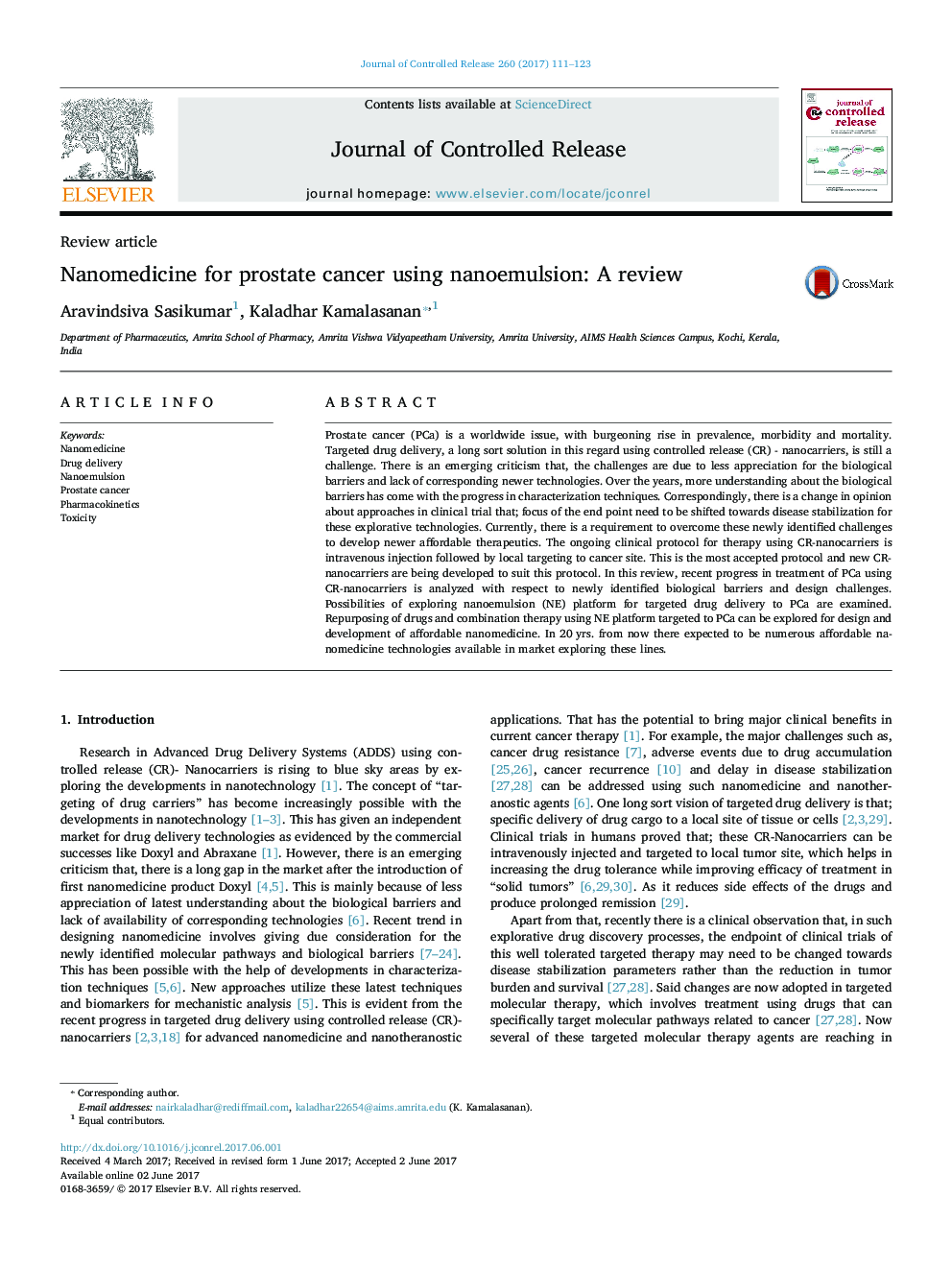| Article ID | Journal | Published Year | Pages | File Type |
|---|---|---|---|---|
| 5433495 | Journal of Controlled Release | 2017 | 13 Pages |
Prostate cancer (PCa) is a worldwide issue, with burgeoning rise in prevalence, morbidity and mortality. Targeted drug delivery, a long sort solution in this regard using controlled release (CR) - nanocarriers, is still a challenge. There is an emerging criticism that, the challenges are due to less appreciation for the biological barriers and lack of corresponding newer technologies. Over the years, more understanding about the biological barriers has come with the progress in characterization techniques. Correspondingly, there is a change in opinion about approaches in clinical trial that; focus of the end point need to be shifted towards disease stabilization for these explorative technologies. Currently, there is a requirement to overcome these newly identified challenges to develop newer affordable therapeutics. The ongoing clinical protocol for therapy using CR-nanocarriers is intravenous injection followed by local targeting to cancer site. This is the most accepted protocol and new CR-nanocarriers are being developed to suit this protocol. In this review, recent progress in treatment of PCa using CR-nanocarriers is analyzed with respect to newly identified biological barriers and design challenges. Possibilities of exploring nanoemulsion (NE) platform for targeted drug delivery to PCa are examined. Repurposing of drugs and combination therapy using NE platform targeted to PCa can be explored for design and development of affordable nanomedicine. In 20Â yrs. from now there expected to be numerous affordable nanomedicine technologies available in market exploring these lines.
Graphical abstractNanomedicine for prostate cancer therapy by parentral route is envisioned in this work. For that, a model is proposed for engineering nanoemulsion after considering the pathophysiology of prostate cancer.Download high-res image (112KB)Download full-size image
